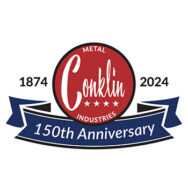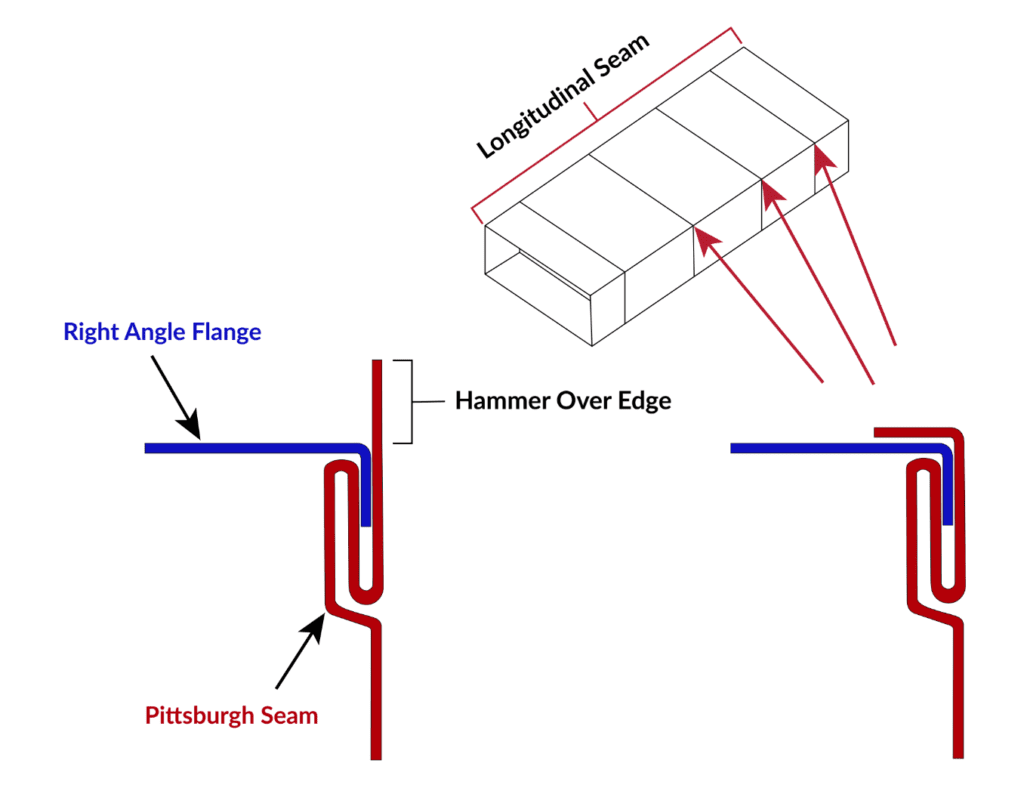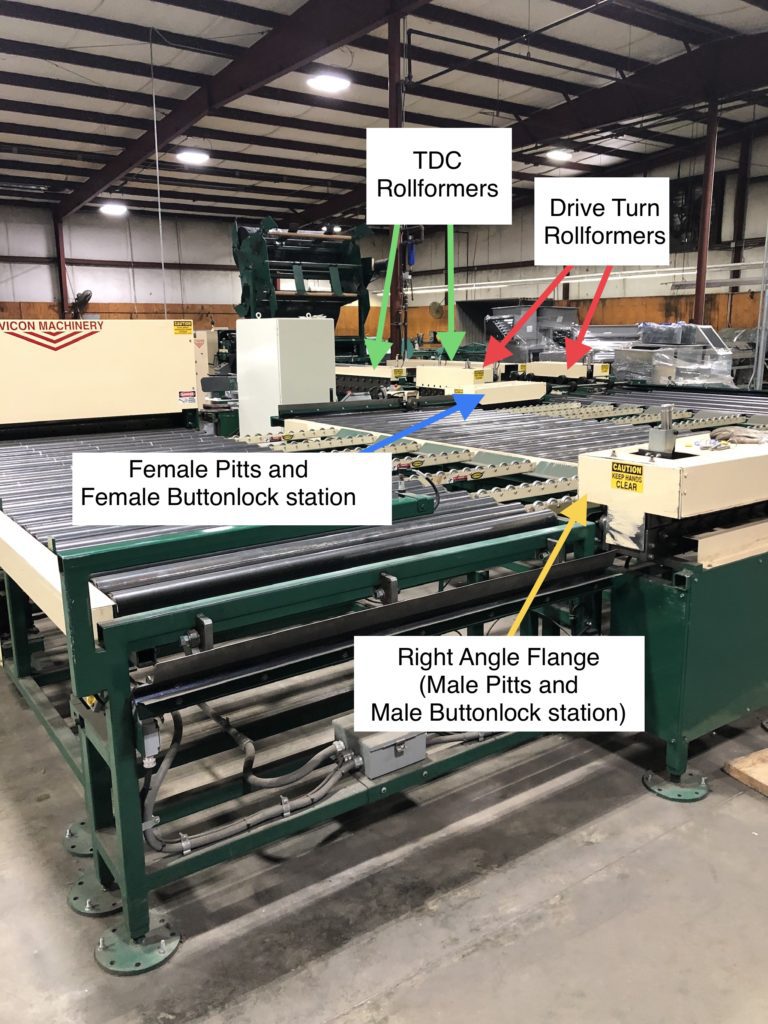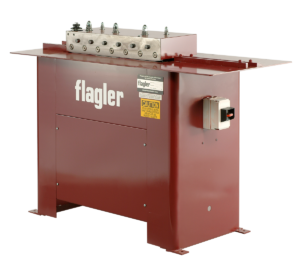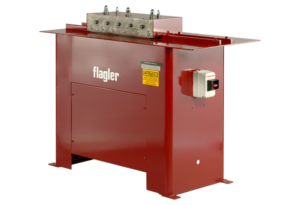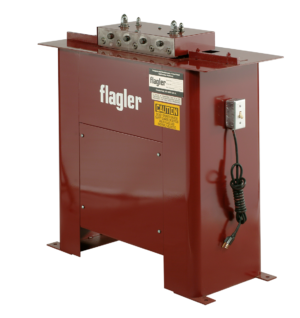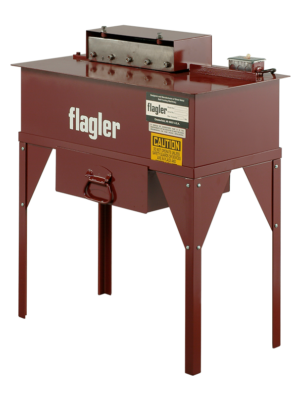You’ll often hear duct shops refer to “Small Pittsburgh” and “Large Pittsburgh” when they reference their fabrication processes. A duct shop may say for example, “we run Large Pitts on straight duct and Small Pittsburgh on fittings” yet, nowhere will you see this differentiation in SMACNA or by Engineers (in Job Specs). That’s because there’s only one Pittsburgh lock Seam; the variation comes because once you start getting into thicker gauges it requires more than 1” of the sheets edge to Rollform the Pittsburgh Seam. Any machine that is using 1” of material to form the Pittsburgh Seam is running “Small Pittsburgh” and the shop is using this machine for all Pittsburgh 26 gauge down to 20 gauge. The Pocket Seam is always 5/16″ deep although the remaining tail (aka the hammer over edge) will vary from 1/4″ to 5/16″ tall depending on the gauge.
The thickest gauge that runs thru this machines is 20 gauge (.035). If a job calls for 18 gauge a shop needs a machine that uses 1-1/8″ of material to form the Pittsburgh seam because .045 is simply too thick to form the Pittsburgh Seam using 1″ of the sheet’s edge: it needs more material. Many shops will have their “Small Pittsburgh” machine for everyday use and then a “Heavy Gauge” Pittsburgh machine for when the job calls for 18 or 16 gauge duct. Large Pittsburgh is simply a result of it requiring more than 1″ of material to form a Pittsburgh seam using thicker metal—18 ga requires 1-1/8″, 16 ga requires 1-3/8″.
A Model 18 ga capacity Pittsburgh uses 1-1/8” of the sheet’s edge to form the Seam the 16 ga model uses 1-3/8”.
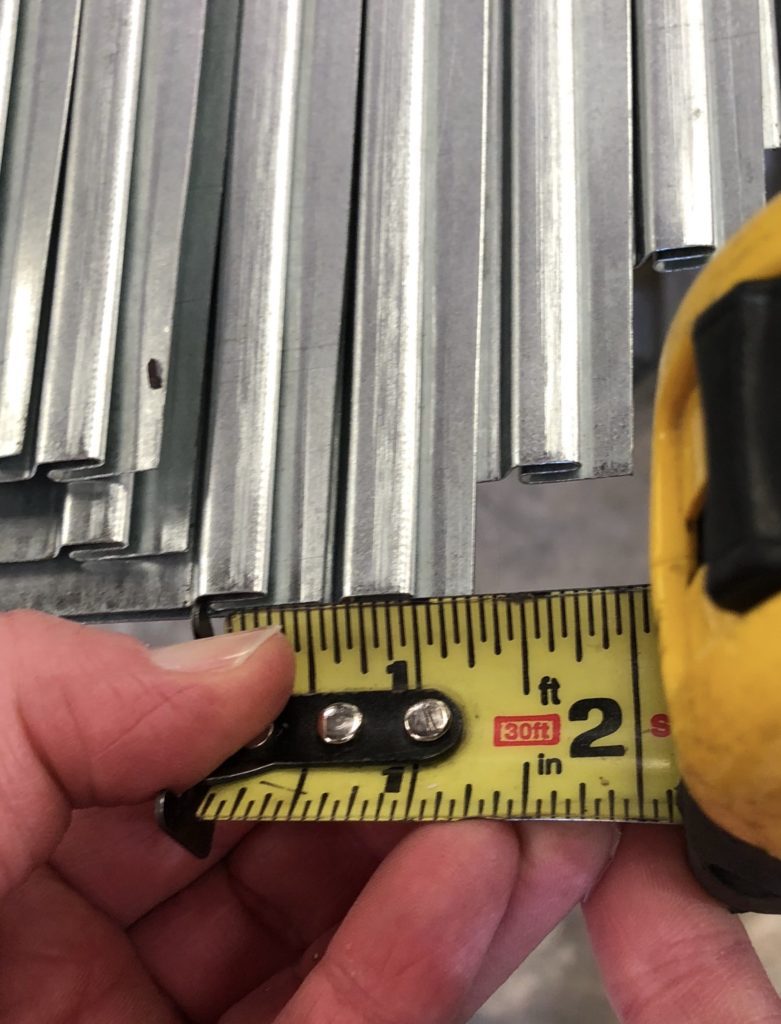
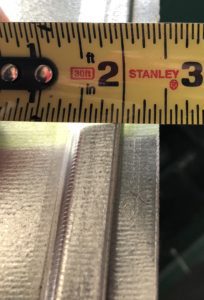
If a shop has a Full Coil Line, does it run Large or Small Pittsburgh?
If a shop has a Full Wrap Coil Line, it is running a Large Pittsburgh profile. This means that all of the Straight duct sections—be it 56″ or 59″ long—are a Large Pittsburgh. Typically a shop with a Full Coil Line will use a free standing Pittsburgh machine and run “Small Pittsburgh” for all of their Fittings since close to 90% of fittings are 20 gauge or lighter. They will usually have a “Heavy Gauge” Pittsburgh machine with capacity of 18 gauge or 16 gauge that they will use when duct has to be made in 18 ga or 16 ga.
If a shop does NOT have a Full Coil Line, should they invest in Large or Small Pittsburgh?
Without a Full Coil Line a shop is running all Pittsburgh straight duct on free standing machines.
If the shop uses Pittsburgh as their only longitudinal lockseam—for their straight duct and their fittings—investing in a durable and fast free standing pittsburgh machine is vital and going “Small Pittsburgh” is the best option. The Small Pitts uses 1″ of material and is good from 26 gauge down to 20 gauge.
26 thru 20 gauge covers 90% of the Duct work jobs—and probably 100% of jobs for many contractors. It’s easier to use small Pittsburgh when assembling Fittings.
Small Pittsburgh is the only machine that is readily available at a high speed option (100 ft per min)—the Flagler 20 gauge High Speed 6 station Pittsburgh rollformer.
Note: Large Pittsburgh 18 ga capacity is available in 100 ft per min high speed as a custom order 10 Station Rollformer OR on one of the two sides of a 10 station Flagler Quadformer.
Could a shop use large Pittsburgh as it’s only Pittsburgh?
It’s fine to use Large Pittsburgh as your only Pittsburgh but be aware that the lighter gauges will have a lot of distortion.
If a Model 18 Pitts is used on too light of a gauge it gets sloppy—partly because it’s using 1-1/8″ of material when it only needs 1″ to form the Seam on 20-26 gauge. On a Model 16 Pitts, it’s worse because it uses 1-3/8″ of material when only 1″ is needed. Also, the farther away you move from capacity listed, the more distortion in the rollforming.

